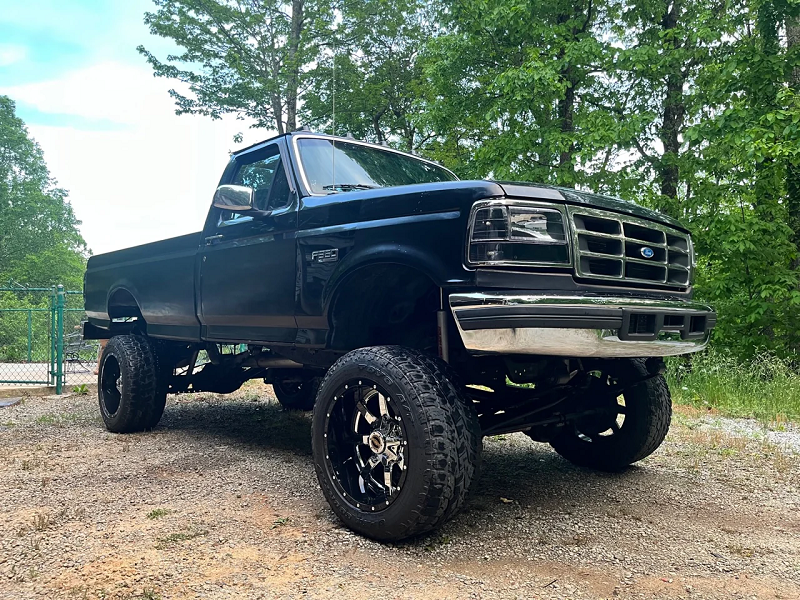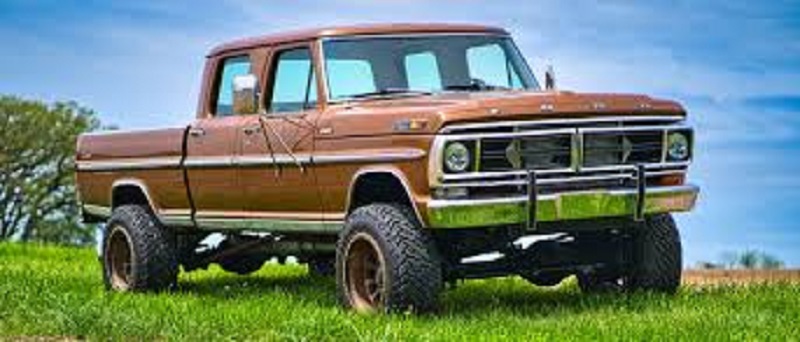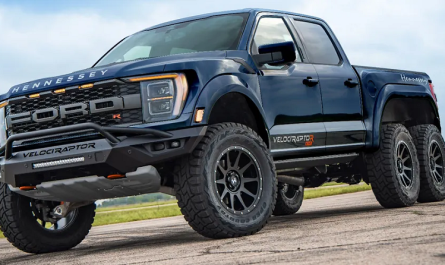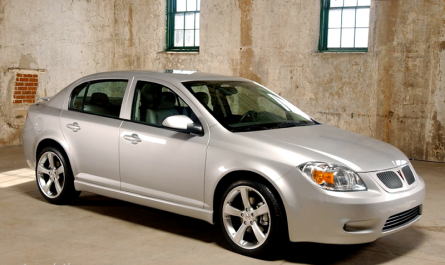In the automobile world, “Fummins” has become somewhat of a household name, especially among fans for diesel engines. For those who do not know, a “Fummins” is a custom vehicle conversion, usually consisting of putting a Cummins diesel engine inside the body of a Ford truck. The hybrid name itself is a play on the words “Ford” and “Cummins,” two names that when paired together may provide a strong and dependable vehicle.

This post will explain Fummins conversions, explain how to make one, go over their advantages and disadvantages, and answer some common questions concerning this unusual upgrade.
Read more: CD009 Transmission: Key Features, Specs, Maintenance Tips, and Price
What is a Fummins?
A truck with a Cummins engine installed in place of the factory diesel engine—usually a Ford Power Stroke engine—is known as a Fummins. The aim behind this swap is to keep the comfort, appearance, and driving experience of a Ford truck while utilizing the well-known reliability and fuel efficiency of Cummins engines. The end product is a strong vehicle that provides performance and dependability, particularly in demanding uses like off-roading or towing.
Why Swap a Cummins Engine into a Ford Truck?
Performance is frequently the main reason for transforming a Ford truck into a Fummins. Cummins engines are renowned for their torque output, longevity, and ease of modification. The 5.9L and 6.7L inline-six models in particular are well-known for this. Even though Ford’s Power Stroke engines are as capable, many enthusiasts like Cummins because to its dependability and simple design, particularly for hard towing tasks or high-horsepower builds.
Advantages of a Cummins Engine:
- Durability: Cummins engines are famous for their longevity. They are designed to handle extreme conditions and high mileage without significant issues.
- Torque: The low-end torque provided by Cummins engines makes them ideal for heavy-duty towing or carrying heavy loads.
- Aftermarket Support: Cummins engines, especially the 5.9L and 6.7L models, have extensive aftermarket support, making it easier to upgrade and modify these engines.
- Fuel Efficiency: Diesel engines generally offer better fuel economy, particularly under load, which is a significant advantage for long-distance driving or work-related tasks.
Why Use a Ford Chassis?
- Comfort and Design: Ford trucks are well-regarded for their interior comfort and design. Many drivers prefer the layout, features, and ergonomics of Ford trucks.
- Chassis Strength: Ford Super Duty trucks, especially in the F-250 and F-350 range, come with strong frames and suspensions that can handle the additional power and torque of a Cummins engine.
- Availability: Ford trucks are more common, and there is a wide range of models and years to choose from when looking for a conversion project.
The Fummins Conversion Process
Converting a Ford truck into a Fummins is no small feat and typically requires a good amount of mechanical skill, knowledge, and time. Here’s a basic overview of the conversion process:
| Step | Description |
|---|---|
| 1. Selecting the Truck | The first step is to choose the right Ford truck for the swap. Common choices include the Ford F-250 or F-350 Super Duty models, particularly from the early 2000s. |
| 2. Choosing the Cummins Engine | The next step is selecting the Cummins engine, most often the 5.9L or 6.7L inline-six engine. These engines are popular due to their performance and reliability. |
| 3. Removing the Stock Engine | The existing Ford Power Stroke engine is removed from the truck. This can be a time-consuming process, particularly if you need to disconnect multiple systems. |
| 4. Installing the Cummins Engine | The Cummins engine is then mounted into the truck. Custom engine mounts may need to be fabricated, and the engine must be connected to the Ford transmission or a suitable alternative. |
| 5. Electrical Integration | One of the more challenging aspects of the swap is integrating the Cummins engine’s electronics with the Ford truck’s electrical systems, such as the gauges, ECU, and more. Some custom wiring or modules may be necessary. |
| 6. Drivetrain Adjustments | The drivetrain may need to be modified to handle the Cummins engine’s increased torque, which can involve upgrading the transmission, driveshaft, and differential. |
| 7. Final Testing and Adjustments | Once everything is installed, the truck is tested and tuned to ensure the engine runs smoothly and integrates well with the truck’s other systems. |
Benefits of Fummins Conversions
Converting a Ford truck into a Fummins offers a range of benefits, both in terms of performance and practicality:
- Improved Towing Capabilities: The Cummins engine provides excellent low-end torque, which makes it ideal for heavy towing or hauling applications.
- Enhanced Fuel Economy: Compared to Ford’s stock Power Stroke engines, Cummins engines often provide better fuel economy under heavy load, which is useful for long-distance hauls.
- Longevity and Reliability: Cummins engines, especially the 5.9L models, are well-known for their durability and ability to rack up hundreds of thousands of miles without major issues.
- Customization Potential: Due to the extensive aftermarket support, Cummins engines can be easily upgraded for more power or better efficiency, allowing owners to tailor their trucks to their specific needs.
Challenges and Drawbacks of Fummins Conversions
While the Fummins setup offers many benefits, it also comes with some challenges that potential builders should consider:
- Complexity: A Fummins conversion is not a simple weekend project. It requires a deep understanding of diesel engines, electrical systems, and fabrication work.
- Cost: Although Cummins engines are reliable, the process of sourcing the engine, fabricating mounts, rewiring systems, and tuning the vehicle can be expensive.
- Compatibility Issues: Integrating the Cummins engine with the Ford truck’s electrical and transmission systems can be tricky, especially with newer models that have more complex electronic systems.
Read more: Kyle Larson Indy 500: A Historic Journey to Racing’s Pinnacle
Cost Breakdown of a Fummins Conversion
| Expense Category | Approximate Cost |
|---|---|
| Ford Truck (used) | $5,000 – $20,000 |
| Cummins Engine (5.9L or 6.7L) | $4,000 – $12,000 |
| Transmission/Adapter Kit | $1,500 – $4,500 |
| Custom Engine Mounts | $300 – $1,000 |
| Wiring and Electronics | $1,000 – $2,500 |
| Labor (if hiring a professional) | $3,000 – $8,000 |
| Miscellaneous (fluids, hoses, etc.) | $500 – $1,500 |
| Total | $15,000 – $50,000 |

FAQs About Fummins Conversions
1. Is a Fummins conversion legal? Yes, a Fummins conversion can be legal, but it depends on local laws and emissions regulations. In some areas, emissions testing and engine swaps must meet specific criteria.
2. Can I buy a pre-built Fummins truck? While rare, pre-built Fummins trucks are sometimes available on the used market. However, many enthusiasts prefer to build their own to ensure everything meets their specific requirements.
3. How long does a Fummins conversion take? The timeline for a conversion can vary widely based on skill level, parts availability, and complexity. Some projects may take a few weeks, while others can take several months.
4. Do I need to upgrade the transmission with a Fummins engine? In most cases, yes. The increased torque output of the Cummins engine may require a stronger transmission, especially if the truck will be used for towing or heavy-duty applications.
5. What’s the most popular Cummins engine for a Fummins conversion? The 5.9L 12-valve and 24-valve Cummins engines are the most popular due to their simplicity, performance, and ease of modification.
6. Is a Fummins conversion worth it? For many enthusiasts, the performance gains and reliability of the Cummins engine make the conversion worth the time and money. However, the value of the project depends on the individual’s needs and expectations.
Conclusion
By fusing the strength and longevity of a Cummins diesel engine with the comfort and style of a Ford, a Fummins conversion can turn a regular Ford truck into a towing and hauling monster. For many diesel fans, the procedure may be complicated and expensive, but the end product is a car with great performance, dependability, and fuel efficiency.


